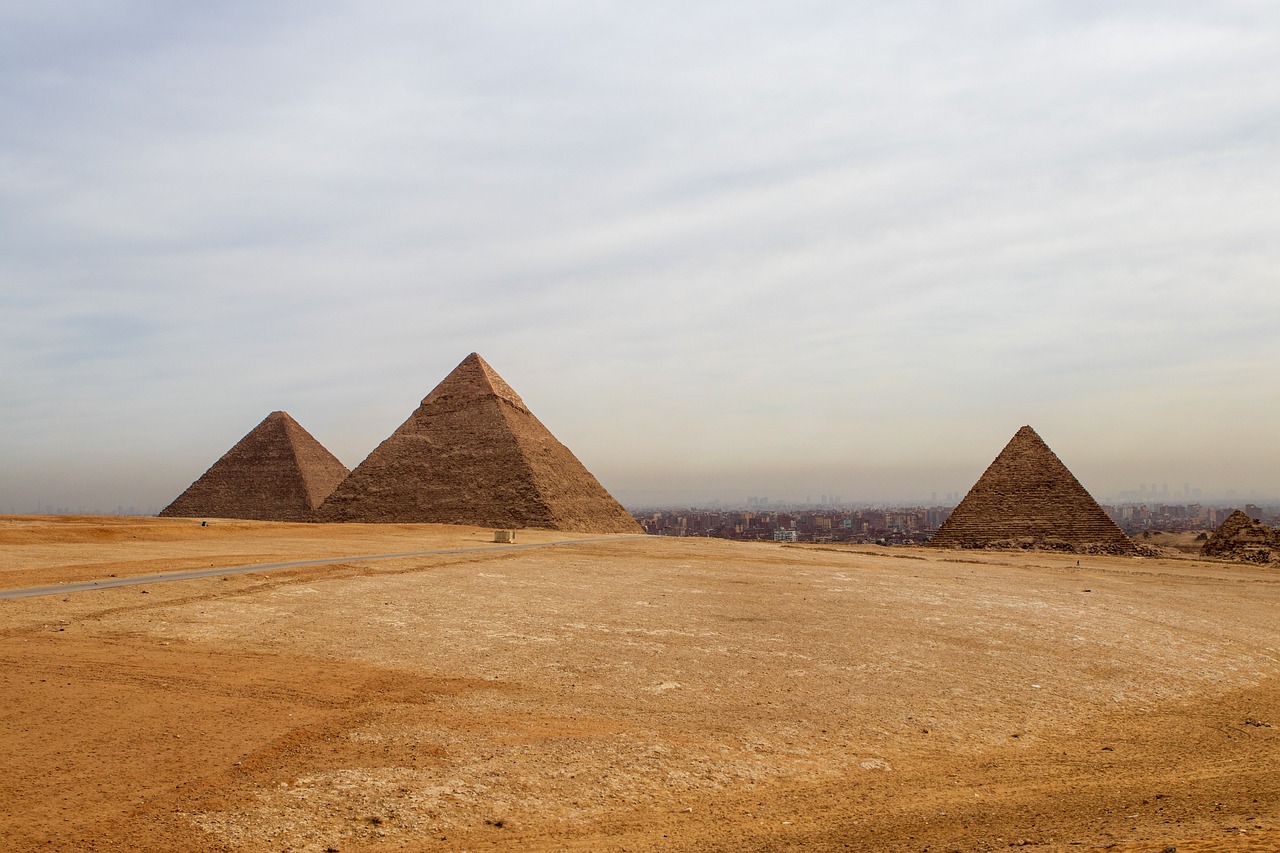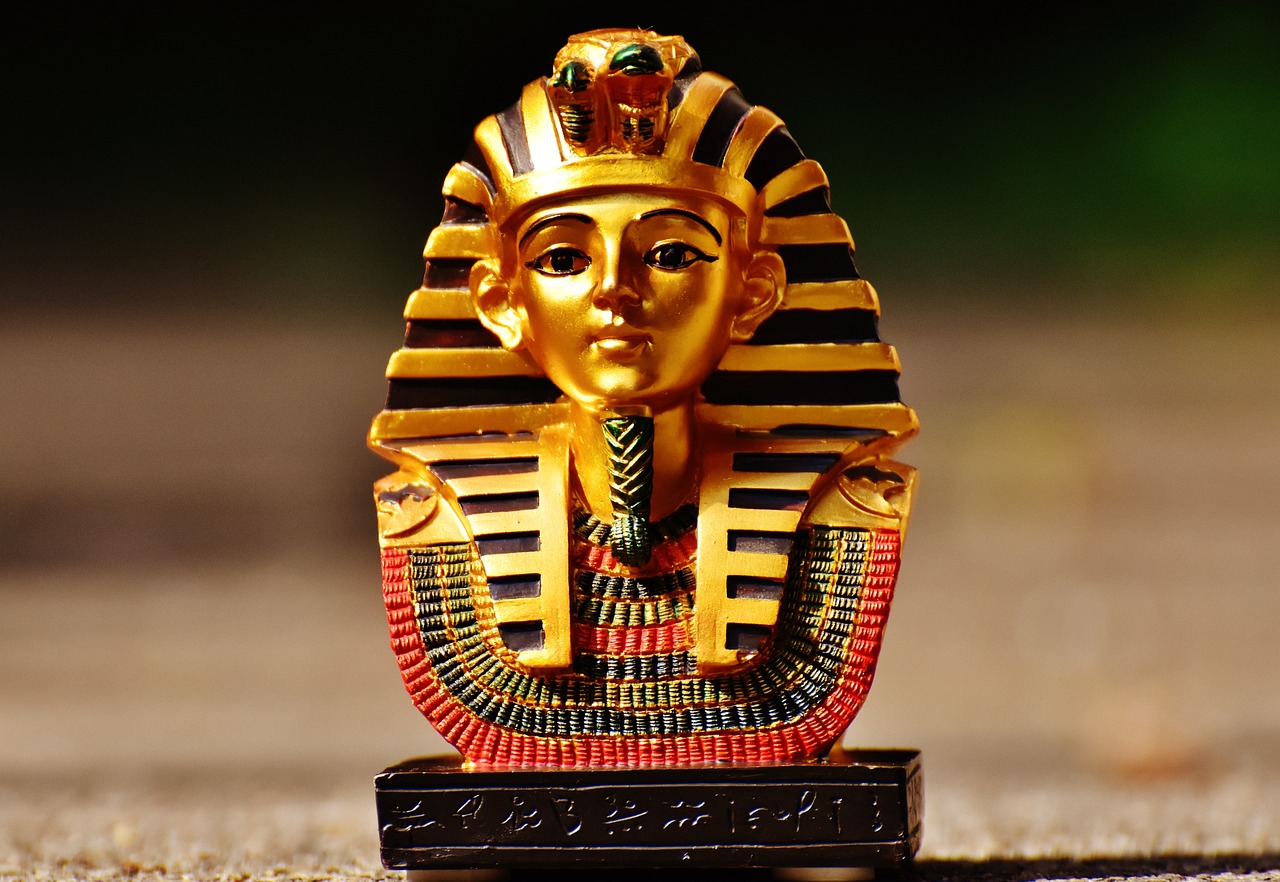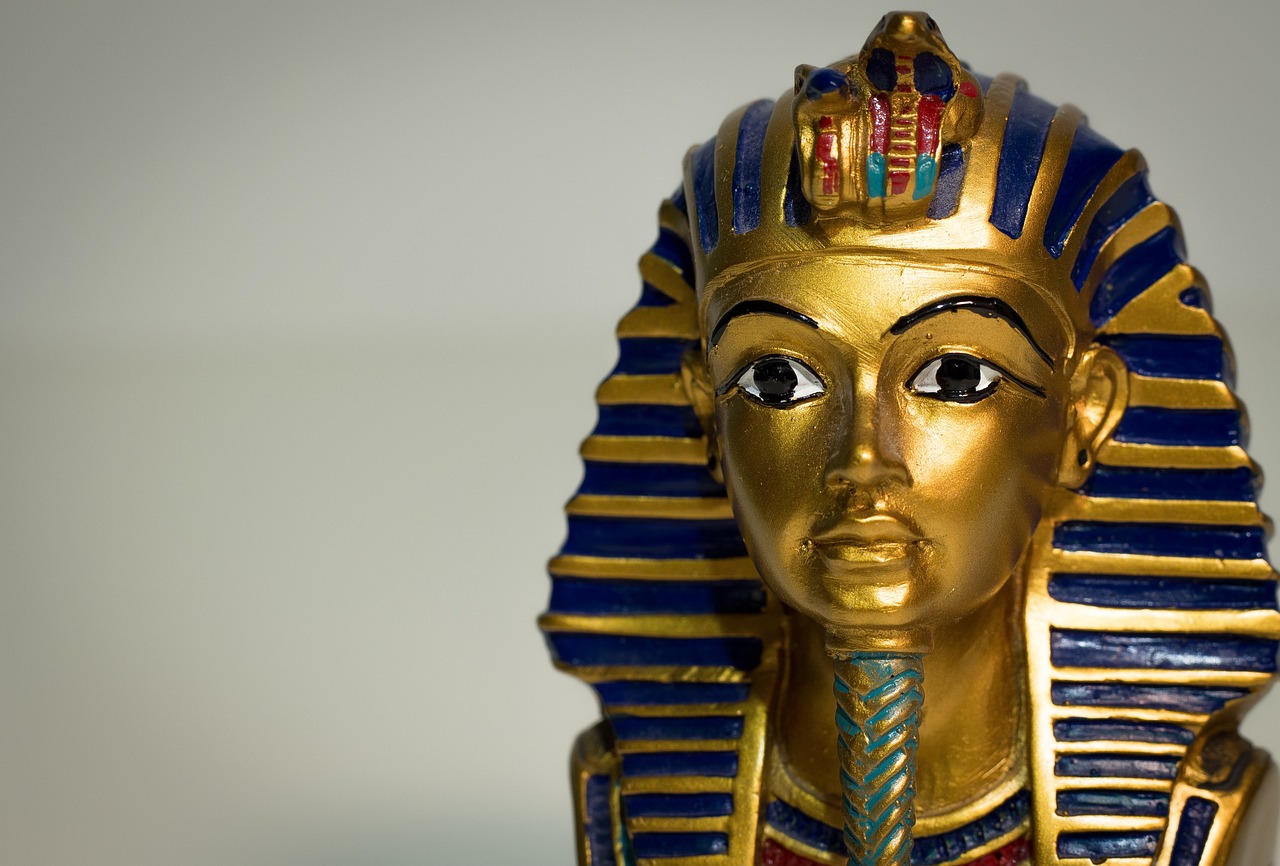The Influence of Ancient Egyptian Culture on Neighboring Civilizations
Ancient Egyptian culture was a beacon of influence that radiated across neighboring civilizations, leaving an indelible mark through a myriad of channels. Trade, warfare, and cultural exchange acted as conduits for the dissemination of Egyptian customs, beliefs, and innovations, shaping the very fabric of societies beyond its borders.
One of the most significant avenues through which Egyptian culture permeated neighboring lands was through trade relations and cultural exchange. Situated at the crossroads of continents, Egypt served as a bustling hub for commerce, facilitating the flow of goods, ideas, and cultural practices. This constant interaction fostered a rich tapestry of shared knowledge, influencing art, technology, and societal norms in profound ways.
The artistic legacy of ancient Egypt transcended its borders, captivating the imagination of neighboring civilizations with its symbolic depth and distinctive aesthetics. From the intricate hieroglyphs adorning temple walls to the imposing grandeur of monumental sculptures, Egyptian artistry inspired and influenced artistic traditions in surrounding regions, leaving an enduring imprint on the artistic landscape.
Architecturally, Egypt's monumental achievements, epitomized by the majestic pyramids, temples, and tombs, set a standard that reverberated across neighboring lands. The innovative engineering techniques, meticulous design principles, and urban planning strategies employed by the ancient Egyptians became a source of inspiration for architectural endeavors in other cultures, shaping the skylines of cities beyond Egypt's borders.
Religion held a central place in Egyptian society, with beliefs revolving around deities, the afterlife, and intricate rituals. These spiritual practices resonated with neighboring civilizations, influencing their own religious beliefs and practices. Concepts such as divine kingship, elaborate burial customs, and mythological narratives found their way into the spiritual fabric of adjacent societies, weaving a common thread of belief.
The Egyptian hieroglyphic writing system and language served as a catalyst for intellectual exchange, fostering the development of new scripts and linguistic adaptations in neighboring cultures. Through trade and diplomatic interactions, the intricate art of writing spread across regions, enriching the literary landscape and facilitating communication and knowledge transfer.
Ancient Egypt's prowess in technological innovations, spanning fields such as medicine, mathematics, and astronomy, had a transformative impact on neighboring civilizations. The sharing of knowledge and expertise led to scientific advancements and technological breakthroughs, enhancing agricultural practices, metalworking techniques, and navigational prowess in societies beyond Egypt.
The intricate social structure of ancient Egypt, characterized by distinct classes and roles, influenced the organizational frameworks and governance systems of neighboring societies. Concepts of centralized authority, legal codes, and administrative practices were adopted and adapted by neighboring civilizations, shaping the foundations of governance and societal order.
Furthermore, Egypt's military strategies and warfare tactics, honed through centuries of conflict and conquest, left an indelible mark on neighboring civilizations. The utilization of chariots, disciplined infantry formations, and strategic fortifications became hallmarks of military prowess, influencing the defense and conquest strategies of surrounding regions.

Trade Relations and Cultural Exchange
Ancient Egyptian culture had a profound impact on neighboring civilizations through trade, warfare, and cultural exchange. This influence can be seen in art, architecture, religion, and language across various regions.
Egypt's strategic location facilitated trade with neighboring civilizations, leading to the exchange of goods, ideas, and cultural practices. This interaction influenced the development of art, technology, and societal norms.
The trade routes connecting Egypt to regions such as Mesopotamia, the Levant, and Nubia allowed for the exchange of commodities like gold, ivory, and spices. This trade not only enriched the economies of both Egypt and its neighbors but also served as a conduit for the transfer of knowledge and cultural practices.
Through these trade relations, Egyptian artisans shared their expertise in craftsmanship, influencing the artistic styles and techniques of neighboring cultures. The intricate designs of Egyptian jewelry, the mastery of pottery making, and the skill in textile production were all highly valued commodities that spread to surrounding regions.
Cultural exchange was not limited to material goods but extended to intellectual and religious spheres as well. The sharing of religious beliefs, mythologies, and rituals fostered a sense of interconnectedness among civilizations, leading to the syncretism of spiritual practices and the adoption of new deities.
Moreover, the exchange of technological innovations, such as agricultural techniques and metalworking methods, propelled advancements in various fields. The cross-pollination of ideas and practices through trade relations laid the foundation for societal progress and innovation in neighboring civilizations.
In essence, the trade relations and cultural exchange between ancient Egypt and its neighboring civilizations were instrumental in shaping the artistic, technological, and social landscape of the ancient world, creating a tapestry of interconnected cultures with shared influences and distinct contributions.

Artistic Influence and Aesthetics
Ancient Egyptian culture had a profound impact on neighboring civilizations through trade, warfare, and cultural exchange. This influence can be seen in art, architecture, religion, and language across various regions.
Ancient Egyptian art, characterized by its symbolic representations and distinctive style, inspired neighboring cultures in their artistic expressions. The use of hieroglyphs, monumental sculptures, and intricate jewelry influenced artistic traditions in surrounding regions.
The intricate hieroglyphs used by the Egyptians not only served as a form of communication but also as a source of inspiration for neighboring civilizations. The symbolic nature of Egyptian artistry sparked creativity and innovation in artistic expressions across different cultures.
Furthermore, the grandeur of monumental sculptures and the meticulous craftsmanship displayed in Egyptian jewelry set a standard for aesthetics that influenced the artistic traditions of neighboring societies. The attention to detail and the incorporation of symbolic elements in Egyptian artistry captivated the imagination of artists in surrounding regions.
Moreover, the architectural marvels of ancient Egypt, such as the pyramids and temples, not only showcased the engineering prowess of the civilization but also set a benchmark for architectural aesthetics. The monumental structures and intricate designs inspired architectural innovations in neighboring cultures, shaping the visual landscape of the region.
In essence, the artistic influence of ancient Egyptian culture transcended borders, leaving a lasting legacy on the aesthetics and creative expressions of neighboring civilizations.

Architectural Legacy and Engineering
Ancient Egyptian culture had a profound impact on neighboring civilizations through trade, warfare, and cultural exchange. This influence can be seen in art, architecture, religion, and language across various regions.
Ancient Egypt's architectural legacy and engineering prowess left a lasting mark on neighboring civilizations. The monumental structures, such as the iconic pyramids, temples, and tombs, not only served as impressive landmarks but also inspired architectural innovations in surrounding regions.
The Egyptians' mastery of engineering techniques, such as precise stone-cutting, ramp construction, and architectural planning, set a standard that neighboring cultures admired and emulated. The grandeur and complexity of Egyptian architecture became a source of inspiration for architects and builders across borders.
Furthermore, the urban planning principles employed in ancient Egyptian cities, with organized layouts, infrastructure development, and monumental structures at the center, influenced the design of urban centers in neighboring civilizations. The concept of creating monumental structures as a reflection of power and religious significance spread to other cultures.
Moreover, the engineering feats demonstrated in the construction of temples and tombs showcased the Egyptians' advanced knowledge of mathematics, geometry, and structural stability. These architectural marvels not only served religious and funerary purposes but also demonstrated the Egyptians' expertise in structural engineering and design.
Neighboring civilizations, impressed by the architectural achievements of ancient Egypt, adopted and adapted various design elements, construction techniques, and architectural styles into their own building projects. The legacy of Egyptian architecture can be traced in the monumental structures and urban landscapes of civilizations that interacted with Egypt, showcasing a blend of cultural exchange and architectural innovation.

Religious Beliefs and Practices
Ancient Egyptian culture had a profound impact on neighboring civilizations through trade, warfare, and cultural exchange. This influence can be seen in art, architecture, religion, and language across various regions.
Egypt's strategic location facilitated trade with neighboring civilizations, leading to the exchange of goods, ideas, and cultural practices. This interaction influenced the development of art, technology, and societal norms.
Ancient Egyptian art, characterized by its symbolic representations and distinctive style, inspired neighboring cultures in their artistic expressions. The use of hieroglyphs, monumental sculptures, and intricate jewelry influenced artistic traditions in surrounding regions.
The architectural achievements of ancient Egypt, such as the construction of pyramids, temples, and tombs, served as a model for neighboring civilizations. Techniques in engineering, design principles, and urban planning were adopted and adapted by other cultures.
Ancient Egyptian religious beliefs were deeply ingrained in their society, revolving around deities, the afterlife, and intricate rituals. The concept of divine kingship, where the Pharaoh was considered a god on earth, influenced neighboring civilizations' spiritual practices. The elaborate burial customs and mythological narratives of ancient Egypt spread to adjacent societies, shaping their religious beliefs and practices.
The Egyptian hieroglyphic writing system and language played a significant role in the cultural exchange with neighboring civilizations. Through trade and diplomatic interactions, the Egyptian writing system influenced the development of new scripts and linguistic adaptations in surrounding regions.
Ancient Egypt's advancements in various fields, such as medicine, mathematics, and astronomy, were shared with neighboring civilizations, fostering scientific progress and technological innovation. The exchange of knowledge led to improvements in agricultural practices, metalworking techniques, and navigation methods.
The structured social hierarchy of ancient Egypt, with distinct classes and roles, influenced neighboring societies' organizational structures and governance systems. Concepts of centralized authority, legal codes, and administrative practices from Egypt were adopted and modified by neighboring civilizations.
Egypt's military expertise and strategic warfare tactics had a significant impact on neighboring civilizations' military approaches. The utilization of chariots, organized infantry formations, and fortified defenses spread to surrounding regions, shaping military strategies and tactics in neighboring societies.
Q: How did Egyptian religious beliefs influence neighboring civilizations?
A: Egyptian religious beliefs, including the worship of various deities and the emphasis on the afterlife, influenced neighboring societies' spiritual practices and rituals.

Language and Writing Systems
The influence of ancient Egyptian language and writing systems on neighboring civilizations was profound and far-reaching. The Egyptian hieroglyphic writing system, with its intricate symbols and pictorial representations, served as a model for the development of new scripts in surrounding regions. Through trade and diplomatic interactions, the knowledge of writing systems spread, leading to the adaptation and evolution of languages.
Ancient Egyptian hieroglyphs not only conveyed written communication but also held symbolic meanings that influenced the artistic expressions of neighboring cultures. The use of hieroglyphs in monumental inscriptions, tombs, and religious texts inspired the creation of new writing systems that reflected the cultural exchange between Egypt and its neighbors.
Furthermore, the transfer of linguistic knowledge between civilizations facilitated the exchange of ideas and intellectual pursuits. The adaptation of Egyptian writing techniques allowed neighboring societies to record their histories, laws, and religious beliefs in written form, fostering cultural preservation and intellectual development.
The impact of Egyptian language and writing systems extended beyond mere communication; it shaped the way neighboring civilizations documented their knowledge, beliefs, and traditions. The legacy of Egyptian scripts can be seen in the diverse writing systems and languages that emerged in the wake of cultural interactions, showcasing the enduring influence of ancient Egypt on the linguistic landscape of the ancient world.

Technological Innovations and Knowledge Transfer
Ancient Egyptian culture had a profound impact on neighboring civilizations through trade, warfare, and cultural exchange. This influence can be seen in art, architecture, religion, and language across various regions.
Ancient Egypt's advancements in fields like medicine, mathematics, and astronomy were shared with neighboring civilizations, contributing to scientific progress and technological innovation. Knowledge exchange led to improvements in agricultural practices, metalworking, and navigation.
The transfer of knowledge from Egypt to neighboring civilizations played a crucial role in shaping technological advancements in the ancient world. Through trade routes and diplomatic interactions, Egyptian expertise in various fields spread far and wide, influencing the development of new tools, techniques, and scientific understanding.
One notable example of technological innovation was in the field of medicine. Egyptian physicians were renowned for their knowledge of anatomy, surgery, and pharmacology. This expertise was shared with neighboring societies, leading to the adoption of advanced medical practices and the development of new treatments for various ailments.
In the realm of mathematics, Egyptian scholars made significant contributions to the understanding of numbers, geometry, and calculations. Their mathematical knowledge was passed on to neighboring civilizations, laying the foundation for further advancements in areas such as architecture, engineering, and commerce.
Astronomy was another area where Egyptian expertise had a lasting impact. The study of celestial bodies, calendar systems, and astronomical phenomena in ancient Egypt influenced neighboring cultures' understanding of the cosmos and celestial navigation. This knowledge exchange facilitated improvements in agriculture, navigation, and timekeeping.
Furthermore, the transfer of metallurgical knowledge from Egypt led to advancements in metalworking techniques among neighboring civilizations. The production of tools, weapons, and decorative items improved significantly, thanks to the sharing of Egyptian expertise in mining, smelting, and metal craftsmanship.
Overall, the technological innovations and knowledge transfer from ancient Egypt to neighboring civilizations played a vital role in shaping the scientific and technological landscape of the ancient world. The exchange of ideas and expertise paved the way for progress in various fields and contributed to the advancement of human civilization.
Q: How did ancient Egyptian knowledge influence neighboring civilizations?
A: Ancient Egyptian knowledge influenced neighboring civilizations through trade, diplomatic interactions, and cultural exchanges. The transfer of expertise in fields like medicine, mathematics, astronomy, and metallurgy led to advancements in scientific understanding and technological innovation.
Q: What were some specific technological advancements shared by ancient Egypt?
A: Ancient Egypt shared advancements in medicine, mathematics, astronomy, and metalworking with neighboring civilizations. These innovations contributed to improvements in healthcare practices, architectural design, navigation techniques, and metallurgical processes.
Q: How did knowledge exchange impact agricultural practices in neighboring civilizations?
A: Knowledge exchange from ancient Egypt led to improvements in agricultural practices among neighboring civilizations. Techniques in irrigation, crop cultivation, and land management were shared, leading to increased agricultural productivity and food security in the region.

Social Structure and Governance
Ancient Egyptian society was structured with a clear hierarchy and defined roles, which had a lasting impact on neighboring civilizations. The social structure of Egypt, consisting of pharaohs, nobles, priests, scribes, and peasants, influenced the organizational systems of surrounding societies. The concept of centralized authority, where the pharaoh held supreme power as both a political and religious leader, served as a model for governance in neighboring regions. This hierarchical system ensured stability and order within Egyptian society, setting a precedent for how neighboring civilizations structured their own governance systems.
Furthermore, Egyptian legal codes and administrative practices were adopted and adapted by neighboring cultures. The development of laws and regulations to govern society, ensure justice, and maintain order were influenced by Egyptian legal principles. The presence of scribes who recorded legal documents, managed state affairs, and maintained records set a standard for bureaucratic systems in neighboring civilizations. The administrative efficiency of ancient Egypt in managing resources, collecting taxes, and overseeing public works projects inspired neighboring societies to establish similar structures to govern their territories.
In terms of governance, the pharaoh's role as a divine ruler with absolute authority shaped neighboring civilizations' perception of leadership and power. The concept of divine kingship, where the pharaoh was believed to be a god on earth, influenced neighboring rulers' claims to legitimacy and authority. The symbolic importance of rituals, ceremonies, and religious duties performed by the pharaoh set a precedent for how rulers in adjacent societies legitimized their rule and maintained social order through religious practices.

Military Strategies and Warfare Tactics
Egypt's military strategies and warfare tactics played a crucial role in shaping the approaches to defense and conquest of neighboring civilizations. The military prowess of ancient Egypt, with its well-trained army and advanced weaponry, set a high standard for military excellence in the region. The use of chariots, a key element in Egyptian warfare, became a symbol of power and dominance on the battlefield. These chariots, equipped with archers and spearmen, provided mobility and firepower, allowing for swift and decisive maneuvers in combat.
Furthermore, Egypt's infantry formations were highly organized and disciplined, demonstrating the importance of coordination and teamwork in military operations. The development of strategic formations and tactics, such as the use of phalanxes and shield walls, influenced neighboring civilizations in structuring their own military forces. These tactics emphasized the importance of unity and coordination in facing enemy forces, ensuring effective defense and offense on the battlefield.
In addition to land-based warfare, Egypt's expertise in fortifications and siege warfare had a significant impact on neighboring civilizations. The construction of fortified cities, walls, and strongholds demonstrated the importance of defensive structures in protecting territories and populations. The knowledge and techniques of siege warfare, including the use of siege engines and tactics to breach enemy defenses, were shared and adopted by neighboring societies facing similar threats.
Moreover, Egypt's naval capabilities and maritime strategies influenced neighboring civilizations in expanding their military reach and securing trade routes. The development of naval fleets, navigation techniques, and naval warfare tactics enabled Egypt to control key waterways and establish dominance in maritime trade. The utilization of warships, naval battles, and coastal defenses showcased Egypt's maritime power and strategic vision in securing its coastal territories and maritime interests.
Frequently Asked Questions
- How did Ancient Egyptian culture influence neighboring civilizations?
Ancient Egyptian culture influenced neighboring civilizations through trade, warfare, and cultural exchange. This influence can be seen in various aspects such as art, architecture, religion, and language across different regions.
- What role did trade relations play in spreading Egyptian influence?
Egypt's strategic location facilitated trade with neighboring civilizations, leading to the exchange of goods, ideas, and cultural practices. This interaction influenced the development of art, technology, and societal norms in surrounding regions.
- How did Egyptian religious beliefs impact neighboring societies?
Egyptian religious beliefs, centered around deities, the afterlife, and rituals, influenced neighboring civilizations' spiritual practices. Concepts like divine kingship, burial customs, and mythological narratives spread to adjacent societies, shaping their belief systems.
- What technological innovations were shared with neighboring civilizations?
Ancient Egypt's advancements in fields like medicine, mathematics, and astronomy were shared with neighboring civilizations, contributing to scientific progress and technological innovation. This knowledge exchange led to improvements in various fields such as agriculture, metalworking, and navigation.
- How did Egyptian military strategies impact neighboring civilizations?
Egypt's military prowess and strategic warfare tactics influenced neighboring civilizations' approaches to defense and conquest. The use of chariots, infantry formations, and fortifications spread to surrounding regions, shaping military strategies and tactics in neighboring societies.



















